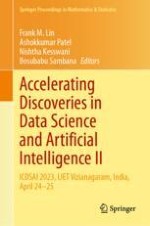This edited volume on machine learning and big data analytics (Proceedings of ICDSAI 2023), that was held on April 24-25, 2023 by CSUSB USA, International Association of Academicians (IAASSE), and Lendi Institute of Engineering and Technology, Vizianagaram, India is intended to be used as a reference book for researchers and practitioners in the disciplines of AI and Data Science. With the fascinating development of technologies in several industries, there are numerous opportunities to develop innovative intelligence technologies to solve a wide range of uncertainties in various real-life problems. Researchers and academics have been drawn to building creative AI strategies by combining data science with classic mathematical methodologies. The book brings together leading researchers who wish to continue to advance the field and create a broad knowledge about the most recent research.
